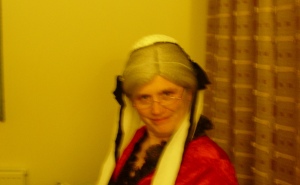St Teresa of Avila – October 15th. ” Christ has no body now but yours”
One of my favourite saints – the great Christian mystic St Teresa of Avila is remembered on October 15th
The following are some notes I prepared last year – including two of her most famous passages.

Collect for St Teresa
Merciful God,
Who by your spirit raised up your servant Teresa of Avila
To reveal to your church the way of perfection:
Grant that her teaching may awaken in us a longing for holiness,
Until we attain to the perfect union of love
In Jesus Christ your Son Our Lord, who is alive and reigns with you
In the unity of the Holy Spirit, one God now and forever. Amen.
St Teresa of Avila was born in Avila, Spain on 15th March 1515. Her parents were both pious Catholics, her father a wealthy merchant and they inspired their daughter to take up a life of prayer. As a young child Teresa showed signs of a deeply religious nature; she would often retreat into silence for prayer and would enjoy giving alms to the poor. She was very close to her Mother, who provided a warm counterbalance, to the strictness of her father. However in her teens, Teresa’s mother passed away, leaving Teresa and nine other children and the young Teresa was distraught at the void she felt. The young St Teresa tells of her despair and how she turned instinctively to the Virgin Mary for comfort in her prayers.
“I threw myself down in despair before an image of the Mother of God. With many tears, I implored the Holy Virgin to become my mother now. Uttered with the simplicity of a child, this prayer was heard. From that hour on, I never prayed to the Virgin in vain.”
During her later teen years Avila became interested in worldy affairs – she had a natural charm and found it easy to make friends. However, she was not at peace, and later she would look back in guilt at her early life. At the age of 16, her father decided to send Teresa to a convent school to be educated.
This reignited in Avila an interest in following a spiritual life and after some deliberation resolved to become a nun of the Carmellite Order when she was 20 years old, inspired by Jerome.’s works. At the time the convent rules were not very strict; it was probably more relaxed than living with her father. The convent accepted many people into the order, often for financial reasons. In this climate Teresa struggled to find time for quite reflection; although she did start teaching people on the virtues of mental prayer.
Shortly after becoming a nun, Avila experienced a severe illness (malaria), which left her in great pain for a long period. At one point it was feared that her illness was so severe that she would not be able to recover. However during this period of intense physical pain, she began to increasingly experience divine visions and an inner sense of peace. These inner experiences of joy and peace seemed to transcend the intense physical pain of the body. She describes in her own words her state of mind during these trials and tribulations
“I bore these sufferings with great composure, in fact with joy, except at first when the pain was too severe. What followed seemed to hurt less. I was completely surrendered to the will of God even if he intended to burden me like this forever….. The other sisters wondered at my God-given patience. Without him I truly could not have borne so much with so much joy.” (2)
When she was a little better she resumed her prayers with renewed vigour. However on telling others of her visions and spiritual experiences she was dissuaded from persuading them. Certain clergy felt they were just delusions of the devil. As a result, for many years Teresa lost the confidence to pursue her prayers and her spiritual life was almost put on hold. However, when Teresa was 41, she met a Priest who convinced her to go back to her prayers. Initially, she had some difficulty sitting through prayers. She wryly remarked the end of the hour’s prayer couldn’t come soon enough. However, in the course of time, she became absorbed in deep contemplation in which she felt an ever growing sense of oneness with God. At times she felt overwhelmed with divine love and it is said at times her body would spontaneously levitate. Teresa, however was not keen on these public displays of “miracles”. When she felt it happening she would ask other nuns to sit on her to prevent her floating away.
Teresa was not a just a quiet, placid saint. She had an endearing, natural quality; her life energy attracted and inspired many who were close. But at the same time her religious ecstasies also caused jealousy and suspicion. She was born into the period of the Spanish inquisition, during this time any deviation from the orthodox religious experience came under the strict observation and scrutiny. On one occasion Teresa complained to God about her mistreatment from so many different people. God replied to her saying “That is how I always treat my friends” with good humour St Teresa replied “That must be why you have so few friends”. St Teresa struggled because there were few who could understand or appreciate her inner ecstasies.
At the age of 43 St Teresa decided she wanted to found a new order recommitting to the values of poverty and simplicity. Initially her aims were greeted with widespread opposition from within the town of Avila. However, with the support of some Priests, the opposition waned and she was allowed to set up her first convent. St Teresa proved to be an influential leader and founder. She guided the nuns not just through strict disciplines, but also through the power of love, and common sense. Her way was not the way of rigid asceticism and self denial. Although she underwent many tribulations herself, to others she stressed the importance of experiencing God’s love.
St Teresa devoted much of the rest of her life to travelling around Spain setting up new convents based along the ancient monastic traditions. She often met with criticism including the papal nuncio who used the rather descriptive phrase “a restless disobedient gadabout who has gone about teaching as though she were a professor” St Teresa also had to frequently contend with difficult living conditions and her frail health. However she never let these obstacles dissuade her from her life’s task. She eventually died on October 4 at the age of 67. A fellow sister describes the hours just before the death of St Teresa.
“She remained in this position in prayer full of deep peace and great repose. Occasionally she gave some outward sign of surprise or amazement. But everything proceeded in great repose. It seemed as if she were hearing a voice which she answered. Her facial expression was so wondrously changed that it looked like a celestial body to us. Thus immersed in prayer, happy and smiling, she went out of this world into eternal life.” (2)
St Teresa Avila was one of the great Christian mystics. Overcoming physical ailments, she became fully absorbed in her devoted to God. As Sri Chinmoy says:
“In Spain, Teresa of Avila offered to the world something profoundly mystical. Her mystical experience is the most successful culmination of the divine marriage between the aspiring soul and the liberating Christ, and it is here that man’s helpless crying will and God’s omnipotent all-fulfilling Will embrace each other.” (5)
Works of Teresa of Avila
In 1566 she wrote Camino de perfeccion (Way of perfection) in about 1566, to tell the nuns how to reach their goal;
In 1580 she wrote what is considered her greatest work; the Castillo interior/ Las moradas (Interior castle/ The mansions) this involved describing the various stages of spiritual evolution leading to full prayer.
Poetry of St Teresa Avila
St Teresa wrote several volumes of poetry and the two following well known passages are from her writings:
“God alone is enough.”
Let nothing upset you,
let nothing startle you.
All things pass;
God does not change.
Patience wins
all it seeks.
Whoever has God
lacks nothing:
God alone is enough.
Christ has no body now but yours
No hands, no feet on earth but yours
Yours are the eyes through which He looks
compassion on this world
Christ has no body now on earth but yours.
2 Comments »
Leave a comment
-
Archives
- June 2016 (1)
- November 2015 (1)
- July 2014 (1)
- January 2014 (1)
- December 2013 (2)
- August 2013 (1)
- July 2013 (1)
- June 2013 (5)
- May 2013 (5)
- April 2013 (1)
- March 2013 (3)
- February 2013 (1)
-
Categories
-
RSS
Entries RSS
Comments RSS







I am interested in all the words to your lovely poem “Christ Has No Hands but Our Hands”
Where might I find the music score to your poem,
Which Publisher?
Thank you so much,
In His Spirit,
Mary Peterson
Retired Parish Nurse Aug2004
Milwaukee, WI
bpeterson7@wi.rr.com or 262.523-1320
Hi Mary,
Great to hear from you and thanks for your request about music for the St Teresa words. I think that it has been set to music- go to:
http://www.turnbacktogod.com/christ-has-no-body-now-but-yours-song/
Good luck – and thanks for reading paxtonvic blog!
God Bless
paxtonvic